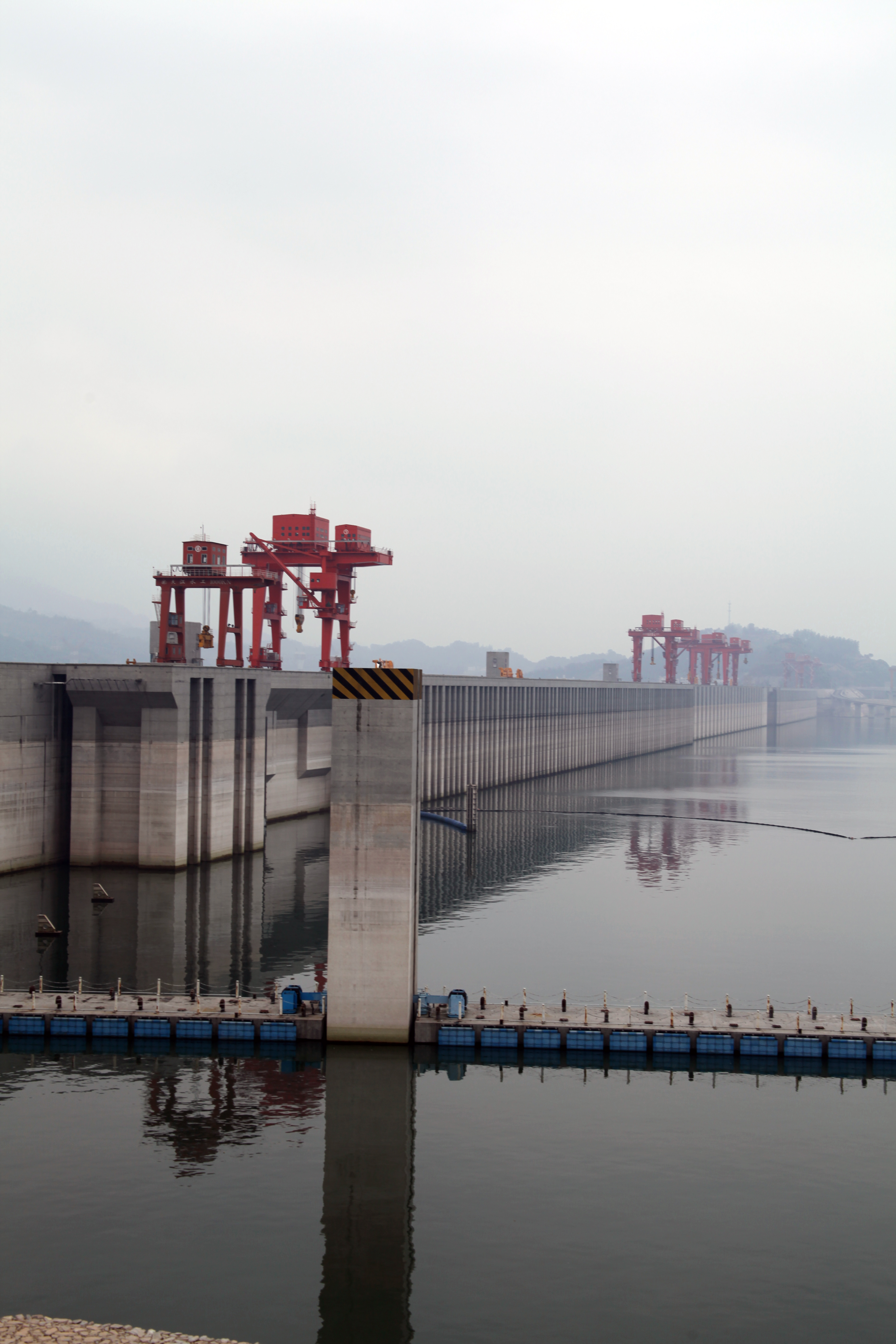Three Gorges Dam
Sandouping-Yichang
Hubei Providence
Peoples Republic of China
Latitude 30.823056
Longitude 111.003333
We recently visited the massive Three Gorges Dam. It was a surreal scene and like everything in China, it was an experience and an adventure getting there. It was a rainy day with a mixture of mist and fog in the air that made visibility limited. The area surrounding the Yangtze River and Yichang area is beautiful with lush vegetation and rising mountain peaks. For most of our trip this majestic landscape was hidden from our view unfortunately, but with the bizarre act of riding outdoor escalators inside the tourist area of Three Gorges Dam we were able to gain a sense of the imposing landscape that surrounded us.
Three Gorges Dam is the Worlds Largest Hydroelectric Dam for both total installed capacity and annual power generating volume. The dam is a representative not just of human engineering, but of Chinese pride in nationalism. A proud massive banner hangs just over the shipping locks visible by all tourists and ships passing though the 5 tiered 15-hour pass. The background image of the banner itself is an aerial view of the dam over which reads in bold red Chinese characters the 12 core socialist values; prosperity, democracy, civility, harmony, freedom, equality, justice, rule of law, patriotism, dedication, integrity, and friendship. These values are defined a bit differently under Chinese law and governance than their western connotations, but it is easy to see that the sheer size of the banner is meant to mimic the size of the dam and amount of Chinese patriotism for it’s completion and operation.
By the numbers the dam is somehow disgustingly impressive in it’s creation and destruction. Dams themselves are in concept a great alternative to the use of fossil fuels. The affects of burning coal and air pollution are visible on a daily bases throughout Mainland China. Dams through out the world have created massive ecological issues from displacing fish populations to landslides. I highly suggest watching the beautifully created film DAMNATION.
Three Gorges Overview-a grain of salt not included.
(Many of the numbers below come from Chinese Government sources, and traditionally what the CCP releases to the public as information is low balled or incorrect entirely. This information does give a good estimate of the project and problems.)
Over a hundred workers died during the lengthy construction project.
Reports place the price tag in the 24-billion-U.S.-dollar range. Critics say that actual costs could be several times the stated amount.
The generators will be able to produce as much power as eighteen nuclear power plants, about 84.6 billion kilowatt hours.
The ship locks are located on one side of the dam. There are two in total, one for upstream traffic and one for downstream traffic. There are five locks, or stages, used to transport large ships, twelve at a time, over the dam.
A shiplift or elevator used to raise smaller ships over the dam is scheduled for operation in 2016.
The dam’s 410-mile-long reservoir flooded about 244 square miles of land including well over a thousand towns and villages.
Over 1.3 million people have been relocated.
The Three Gorges plan included compensation for the displaced, such as payments and new homes and jobs, but these efforts were plagued by widespread local corruption and complaints that funds did not reach the intended recipients.
The dam has blocked an estimated ten million tons of plastic bags, bottles, animal corpses, trees, and other detritus that would have flowed out to sea.
3,000 tons of garbage is being collected at the dam every day.
Engineers have created a solution to prevent the trash from damaging power generators. It is a giant garbage-lapping “tongue.”
The Shanghai Daily reports that a rolling track similar to a moving sidewalk, will collect refuse from its platform atop a garbage boat. Engineers say that the device can consume up to 392 cubic yards of garbage an hour.
1.5 million dollars is spent each year clearing up to 220,000 cubic yards of floating waste by the dam.
The reservoir is by polluted by factories, mines, dumps, and other potentially toxic sites in the area. Large volumes of human waste and industrial refuse flow into the now dammed river from communities like Chongqing, and environmentalists warn of serious water contamination issues.
Read more about the Dam here.
